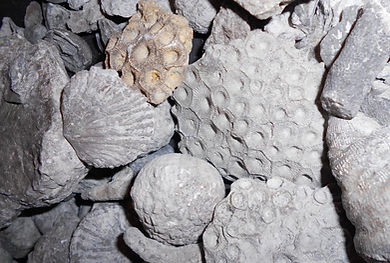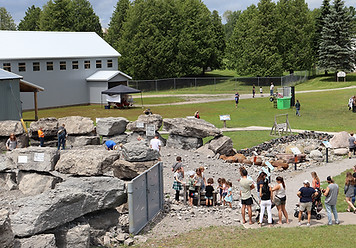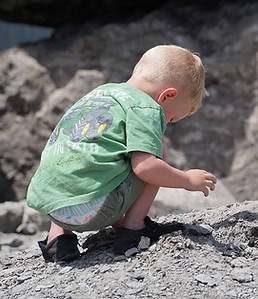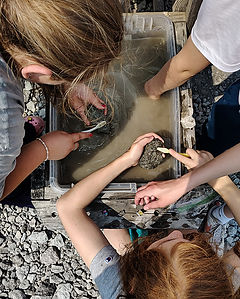FOSSIL PARK
Digging Geology!
The Besser Museum for Northeast Michigan seeks to inspire curiosity, foster community pride, and cultivate independent legacy through art, history, and science, so the Fossil Park exhibit is a perfect fit. Besser Museum offers two individual fossil park experiences. Both outdoor Fossil Park exhibits contain fossil material generously donated by Lafarge (Holcim) Alpena Plant and Specification Stone Products of Alpena.

One of the Fossil Parks is located in the museum’s backyard and is included with regular museum admission. The Fossil Park is accessible Monday-Saturday 10 am - 4 pm as weather permits. The Fossil Park is not accessible during winter months due to snow coverage.
The other Fossil Park is located on the west side of the building at the back of the museum’s parking lot. This Fossil Park option is free to the public from dawn to dusk depending on weather conditions. The park is closed during winter months.
Your visit may be best enjoyed if you: expect to get a little dirty, wear footwear for all terrain, bring a small trowel for prying, a water bottle to loosen fossil specimens from hardened soil, and a tote for hauling home your fossil finds. Happy collecting!
Join us the first Saturday in October for Fall Harvest Fossil Fest.



Alpena Rocks!
By studying the unique features of rocks and rock formations, geologists can learn a great deal about prehistoric environments and the organisms that lived there. For example, the limestone found in Northern Michigan tells geologists that this area was once located near the equator and covered by a warm shallow tropical ocean teaming with life. Geologists call this time period the Devonian Period and believe it to have existed over 350 million years ago.

When glaciers moved through, they carried off layers of sediment exposing the fossilized limestone baring the remains of prehistoric marine creatures such as brachiopods, crinoids, corals, and trilobites.
Limestone, an abundant natural resource in Northeast Michigan, is also the main ingredient in the cement used to make concrete, and concrete is the second, only to water, most consumable substance on Earth.
When visiting the Fossil Park, you will not only learn all these interesting facts, but you will also get to dig in our simulated limestone quarry and keep all the Devonian fossils you find.

